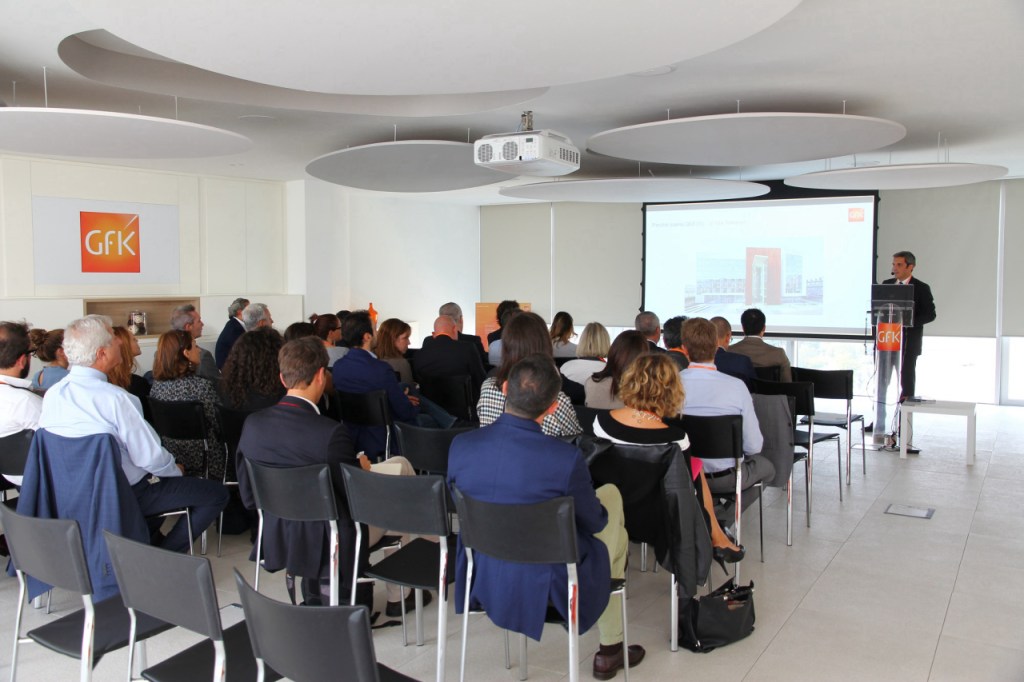Over the last 10 years, the media landscape has been hit by a full-blown digital revolution. The backdrop is more complex, not just because it has changed, but because it never stops changing. These days, consumers are increasingly difficult to reach, the media diet is more fragmented every day and the touchpoints have multiplied.
One of the most visible effects of this change? The difficulty in knowing how effective advertising has or hasn’t been, how the pieces of the puzzle need to be arranged.
Without properly quantifying the results based on the “right” information, the investment in your marketing budget will lack the elements to support the optimal choice of the media mix from the possible levers.
This matter was discussed at the GfK@ROI Conference: Re-evaluate, Optimize, Innovate. Creators of the conference for GfK Italy were Enzo Frasio (Commercial Director), Roberto Borghini (Product Head) and Sabrina Melinu (Account Manager, Value Added Services).
However, our role was different from usual, the experts steered the audience towards the event’s ambitious goal: to provide retailers and manufacturers with the tools to be able to make 360° measurements of the ROI of their business activities.
All based on some key questions to assess their marketing mix: Have they led to a sales uplift? Have they been able to drive traffic on their digital platforms? Have they influenced the brand’s KPIs positively? And the intention to buy?
3 key ways to rethink your marketing strategies
- Re-evaluate: Move away from subjective “perception” of campaign success towards precise measurement, that identifies actions put into place for your brand that bring a real return on investment from the results to be connected to external factors.
- Optimize: Define the optimal marketing mix, ensuring the maximization of sales in both the short term and the long term, taking all touchpoints (below the line and above the line) and demographic profiles into account.
- Innovate: Testing fresh ways to exploit new synergies between media and touchpoints is often the key to identifying the most powerful mix.
Some particularly innovative case studies were presented at the event by three exceptional guests: Samsung, Google and Facebook.
How much of my sales come from in-store initiatives and how much from the media mix?
The collaboration between Google and Samsung that has come about from the meeting of two needs: to measure the impact of digital platforms (YouTube, Google Search) on off-line sales and to identify the optimal mix between above the line (ATL) and below the line (BTL) initiatives for the Samsung TV market.
Using the Marketing Mix Modeling (MMM) model combined with different data sources, it was possible to measure the uplift and ROI of each marketing lever.
Baptiste Tougeron, Head of Marketing Mix Models SE at Google EMEA, explained in his speech that the success of this project also depended on the use of granular data:
- Clicks and Impressions of the campaigns for over 1000 Italian cities from Google
- Sales per POS analytics data from GfK
Commenting on the results of the study, Claudia Guardamagna (Consumer Insight Manager at Samsung Italy), emphasized how beneficial the results were to the company in establishing the key points of its strategies and the importance of embarking on structured research to optimize the media mix in the long term.
Measure reach, frequency, and effects on the demographics with MME
An innovative example of ROI measurement of digital campaigns was provided by Stefano Cirillo (Head of Marketing Science at Facebook Italy). A meta-analysis carried out with the aim of measuring reach, frequency and effect on the targets of six campaigns for brands of the consumer packaged goods (CPG) industry.
Using our Media Mix Efficiency (MME) model, the study demonstrated the positive impact on the sales of Facebook campaigns analyzed, with a comparison with TV commercials run at the same time. The analysis also allowed for measurement of the extra-reach generated by the digital campaigns, including for older age groups.
Conclusions: the virtuous circle of effectiveness
The measurement of the effectiveness of a campaign requires a series of steps: the starting point is to measure past campaigns, then optimize the new marketing activities (demographic analysis, strategic planning) and finally, re-measure the results of the campaign defined on the basis of the previous analysis.
We’ve developed innovative solutions (MMA, MME, POS Analytics, Consumer Insights) to help our customers in all steps of the virtuous circle of effectiveness.





